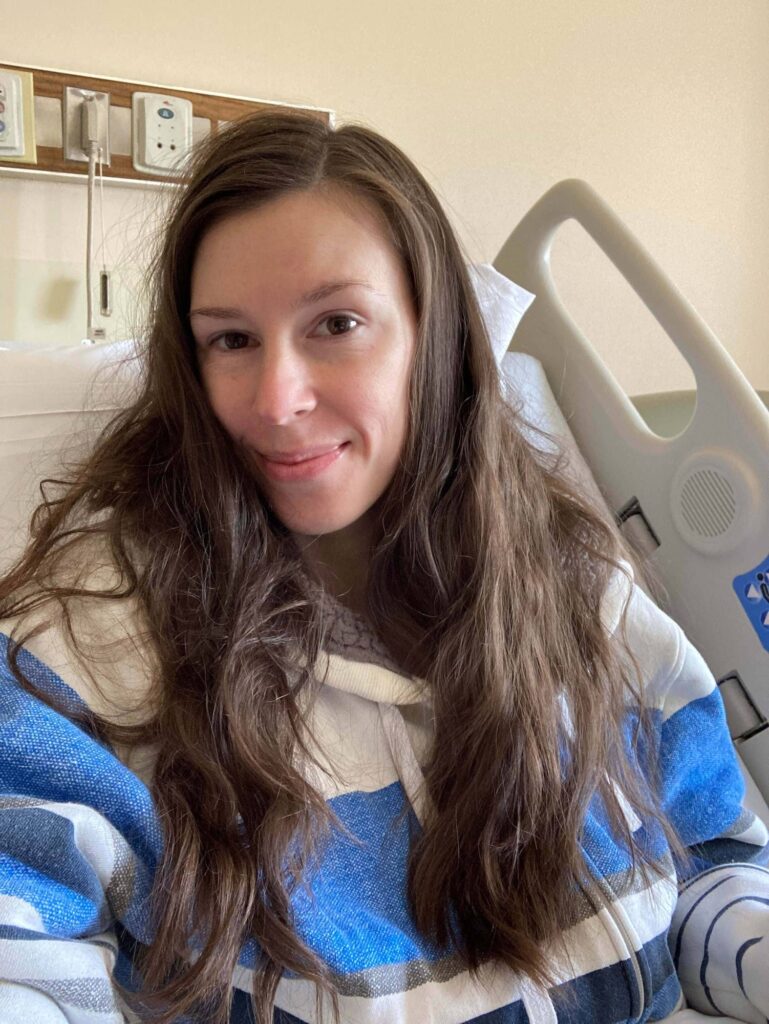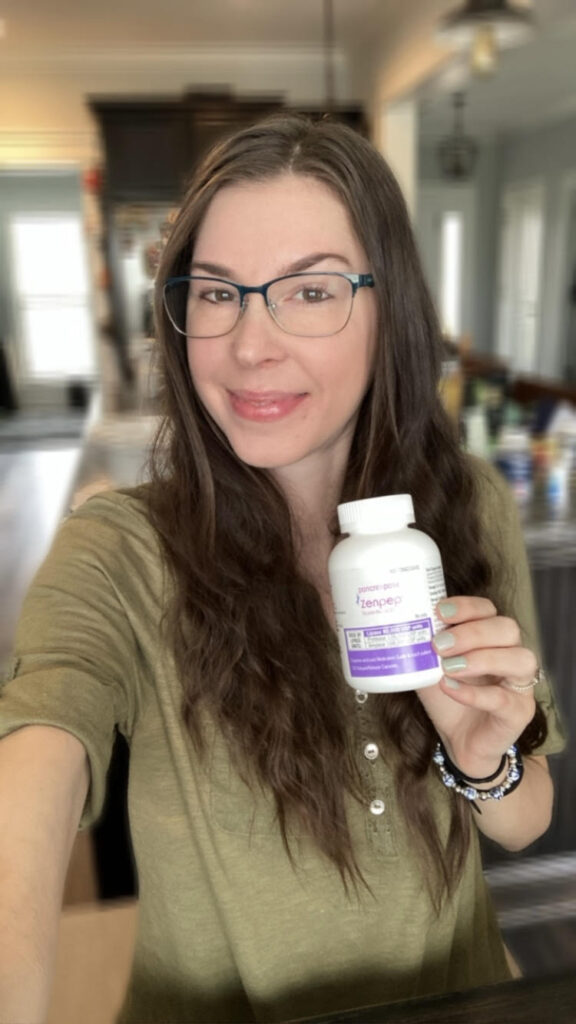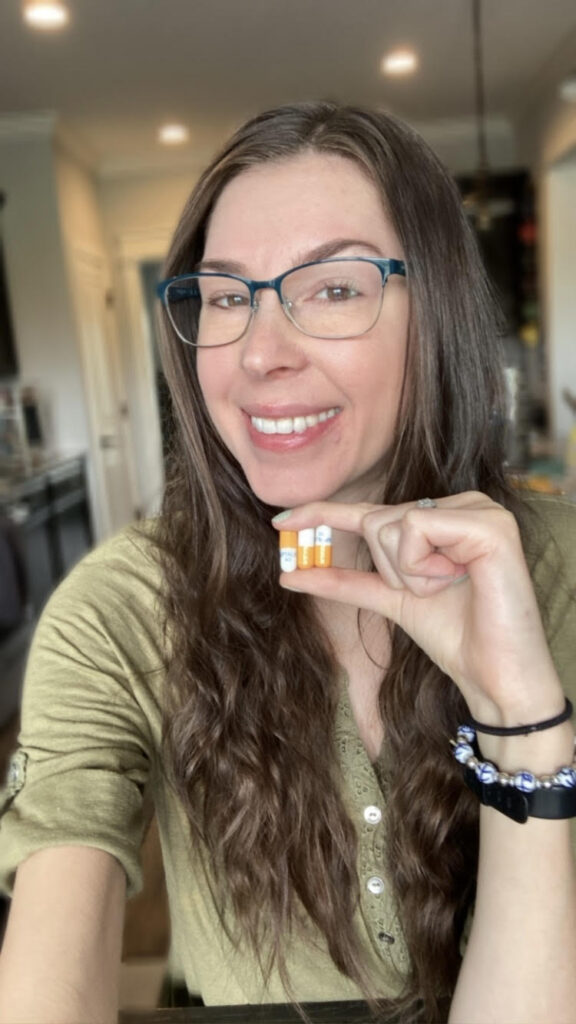Welcome back to part two of this 6-part blog series about my recent journey with autoimmune pancreatitis!
If you missed part one, be sure to check it out here first. It’s all about my pancreatitis symptoms, blood tests and procedures I had done, and my first (of three) hospital stays.
Today’s post will cover my second hospitalization (including further blood tests, procedures), the results of an abdominal MRI, starting a digestive enzyme supplement, and what led to my unofficial diagnosis of autoimmune pancreatitis.
If you or a loved one is going through a pancreatitis diagnosis, I hope you find this blog series helpful! When I was in the throes of this earlier in 2024, I could hardly find any information on autoimmune pancreatitis—especially from the patient perspective.
So I hope my story provides some insight, tips, and helpful topics to bring up with your medical team. Let’s dive in!
Abdominal MRI
I was released from my first hospital stay on December 6, 2023. During this time, I was following the hospital’s instructions: drinking tons of water, eating an extremely low-fat diet of no more than 30 grams of fat per day to give my pancreas a rest, and taking things easy.
Unfortunately, despite following this plan, I was still experiencing pain. I was hobbling around the house, weak-limbed and hunched over because straightening my spine increased the ache in my abdomen.
This was my life for nine days, until the pain increased to the level it was that first brought me to the ER. I knew I had to go back.
But…I had a regular 6-month abdominal MRI scheduled for December 15th, and I didn’t want to go to miss this procedure while being in the ER. (During my first hospitalization, they wouldn’t do an MRI on me for some reason, so I wanted to keep this MRI appointment in hopes it would give us answers).
My plan was this: hold out until December 15th, do my MRI, then go immediately to the ER afterwards.
And this is what we did.
My husband drove me to my MRI, every little bump in the road making my stomach feel like it was ripping in half.
Thankfully, the MRI went smoothly, though it was uncomfortable laying on my back since that position hurt my stomach. The moment it was over, we drove back to the ER and I found myself in the triage room yet again.
Hospital Stay #2
December 15th – 18th, 2023
They admitted me pretty quickly—documenting it as recurrent pancreatitis—and they did the standard blood work.

Testing at the Hospital
Blood Work
Similar to my first hospitalization, most things were normal including my liver numbers and white blood count. My CRP was justttt within normal range at 7.5 mg/L (compared to 14.9 mg/L during my first hospital stay).
But my lipase was off-the-charts high again at 2,916 U/L! (The normal range is between 13 – 75 U/L.) So, although it was lower than when I was hospitalized the first time (5,279 U/L), it had increased since my recent discharge (1,652 U/L).
CT Scan
They also did another CT scan, which I wasn’t happy about since I had just done one the week prior. However, I was desperate for answers, so I agreed.
Unfortunately, this CT scan didn’t give us information either. Again, the pancreas was “unremarkable.” They couldn’t see any inflammation, or any pancreatic dilation, cysts, or tissue death.
All this was great news.
And also the absolute worst—because I was still in immense pain with crazy high lipase, but no closer to answers.
Hospital Treatment Plan
Like my first hospitalization, I was NPO, which means I wasn’t allowed to eat or drink anything for days. They hooked me up to an IV for fluids and nutrients, but it did nothing to ease my parched mouth. As someone who chugs tons of water every day, my throat got so dry and raspy that it cracked and I could barely speak!
They continued to monitor my lipase and other labs. They also offered me pain medication. But this was the extent of treatment.
I spoke with the hospitalist about any meds that could be causing my pancreatitis. I remember reading that oral contraceptives can cause acute pancreatitis. So, I stopped taking my birth control pill right there in the hospital, hoping it would solve the issue.
It didn’t.
I was also on Entyvio for my ulcerative colitis, but pancreatitis caused by Entyvio is extremely rare. And when it happens, it usually occurs right when a patient begins the treatment (usually after the first few infusions). I’d been on Entyvio for five years (that’s 30+ infusions!) without issue, so she and I agreed it likely wasn’t that. (We’ll come back to this in part 5!)
So, still no answers.
Every day, I’d ask my hospital medical team to call the hospital where I had the MRI done and request for those results to be expedited. I had a gut feeling the MRI would have answers. But after three nights, they discharged me without receiving the MRI results; they chalked up my diagnosis to “idiopathic pancreatitis”—pancreatitis that happens for an unknown reason.
When I was sent home, my lipase was still extremely high at 2,110 U/L. (Nearly 30x higher than the normal upper limit).
Though glad to be out of the hospital, I was now frustrated. It felt like I was just a ticket number and not a patient in pain desperate for answers. During both hospitalizations, their treatment plan was the same and they gave us the same results: nothing.
At Home Treatment Plan
Low Fat Diet
My hospitalist told me to stay on the low-fat diet. Since I was allowed no more than 5 grams of fat per meal/snack, I had to cut out most things: red meats, peanut butter, eggs, avocado, nuts, baked goods, and so much more.
It still hurt to eat, so I didn’t feel like eating much anyways. And when I did manage to eat, I’d get full so fast and stay uncomfortably full for hours. Just a third of a can of soup made me feel as stuffed as though I’d gorged myself. Needless to say, I dropped weight in the hospital and at home.
I felt weak and looked like a skeleton.
I shuffled around the house, hunched over because standing up straight hurt my stomach. I was slow-moving, exhausted, and feeling defeated. I’d lost over 20 pounds those past few weeks, dropping from a healthy 135 to less than 110 pounds. (I’m nearly six feet tall!) My body mass index (BMI) was 15, officially placing me in the underweight category.
My arms looked like broom sticks. My legs looked like chicken legs. You could see my ribs. I became extremely self-conscious about this, which didn’t help my mental state.
It was clear I’d have a long road to recovery ahead of me.
Medications
At home, I started a new medication called Zenpep. This is a digestive enzyme that helps your stomach break down food. When you have pancreatitis, your natural digestive enzymes (lipase and amylase) aren’t working properly, and they slip into the bloodstream instead of breaking down fat. So, these Zenpep pills were supposed to help replace those lost to the bloodstream and help me digest food.
My GI told me to take 3 pills with meals and 2 with snacks. I don’t take any if I’m having liquid without fat, like fruit juice, black coffee, or tea.
And, again, I didn’t get much help from the hospital. They sent me home with more norco and simply wished me the best.


Abdominal MRI Results
Once back home, I finally got my MRI results. And FINALLY, I got some information.
The results stated that my pancreas was enlarged and my pancreatic duct was narrowed. It said this looked compatible with IgG4-related autoimmune pancreatitis, also known as Type 1 autoimmune pancreatitis (AIP).
However, these results were problematic because my IgG4 levels were taken during my first hospitalization and were normal. Perhaps this meant I had Type 2 AIP instead?
More testing needed to be done.
Follow Up Testing
My physician’s assistant ordered another IgG4 blood test, as well as other labs to collect more data. Here’s what he ordered and their results:
- IgG4: 19 mg/dL. (Normal range is 2 – 96 mg/dL). When I did this test a few weeks prior, my results were similar at 15 mg/dL. This was further proof I probably didn’t have Type 1 AIP.
- CA 19-9: <2 U/mL. (Normal range is 0 – 35 U/mL). This is a tumor marker that looks for cancer. Thankfully, my result was normal.
- ANA Direct: Negative. (Normal result is negative). This looks for antibodies in your blood and can help diagnose various autoimmune disorders.
- Vitamins D2, D3, and K1: These were on the brink just within normal limits.
- Vitamins E and A: These were healthily within normal limits.
- Lipase: Yet again, my lipase off-the-charts high at 2,994 U/L. It had already increased since my discharge. (Normal range is between 13 – 75 U/L.)
Unofficial Diagnosis
After reviewing these results, my physician’s assistant believed my pancreatitis to be Type 2 AIP. Clearly there was an autoimmune component, judging by the MRI results. And because my IgG4 came back normal both times, I probably didn’t have Type 1.
Phew! I finally had a diagnosis, unofficial as it was. As many of us know, even a suspected diagnosis is oftentimes far better than having no idea what our bodies are doing.
Now, all I had to do was focus on my low-fat diet and recovery. But as you may have guessed, it wasn’t that easy.
Read Part 3 in this Pancreatitis Series
Just days after discharge from my second hospitalization, the pain returned to the point where I needed to take my pain medication. (I try to avoid taking pain meds unless absolutely necessary).
Then, a few days later, I found myself back at the ER for the THIRD time that month. And that’s what I cover in my next blog post: getting an endoscopic ultrasound (EUS), testing for genetic pancreatitis, and starting prednisone.
Want more information on autoimmune pancreatitis, my symptoms, and this crazy diagnosis journey? I’m breaking my Instagram hiatus to share lots more info about this lengthy health update. Find me on Instagram here.
Thank you for reading, and chat more soon!






You are one tough woman!
Thank you so much! Phew, it’s been one tough journey!